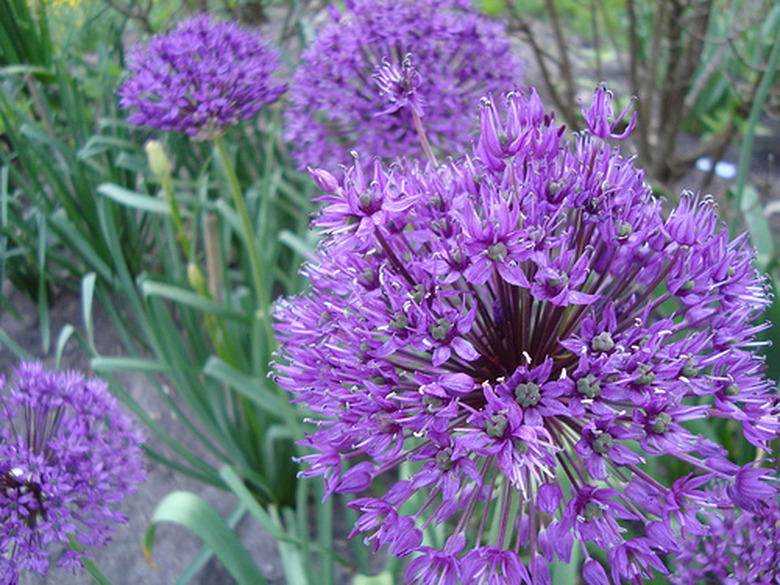How To Care For Alliums
Things Needed
- Organic compost
- Tiller
- Fertilizer
- Mulch
Tip
Alliums can be harvested at the end of the year when the foliage begins to turn yellow in color. The recommended mulch for alliums is evergreen boughs or straw.
Allium is a genus of bulbous perennials that includes onions, garlic, shallots and leeks. They are native to most temperate climates around the world, and produce clusters of flowers that resemble small spheres. The different species of alliums vary greatly in size and color, but all varieties share a strong, pungent odor. The bulb of every allium is edible, though the taste is not always desirable.
Step 1
Plant allium bulbs in the fall in a location that receives 4 to 6 hours of direct sunlight each day. Spread 2 to 3 inches of organic compost over the soil prior to planting, and use a tiller to mix into the soil.
Step 2
Dig a hole to a depth of three times the diameter of the bulb, up to a maximum of 6 inches. Place the bulb directly into the hole with the pointed side facing up, and gently refill with soil. Water lightly to collapse air pockets.
- Allium is a genus of bulbous perennials that includes onions, garlic, shallots and leeks.
- The bulb of every allium is edible, though the taste is not always desirable.
Step 3
Begin watering alliums after the first growth has emerged from the soil. Apply water two to three times a week, or any time the soil has completely dried. Cease watering once the foliage has begun to die, and do not resume until the next growing season.
Step 4
Feed alliums using a balanced 10-10-10 NPK fertilizer once every 3 weeks after planting. Continue year round to ensure the plant has plenty of nutrients. Apply the fertilizer directly to the surface of the soil. Follow the instructions on the packaging for proper dosage.
- Begin watering alliums after the first growth has emerged from the soil.
Step 5
Spread a thick layer of mulch over the allium bulb before the first frost of winter. Mulch is required to maintain a constant soil temperature during winter, and to reduce the chance of early sprouting which can result in frost damage.
References
- Tesselaar Plant Care and Growing Guides – Alliums
- Book: Organic Gardening for Dummies; Ann Whitman and Suzanne DeJohn; 2009
